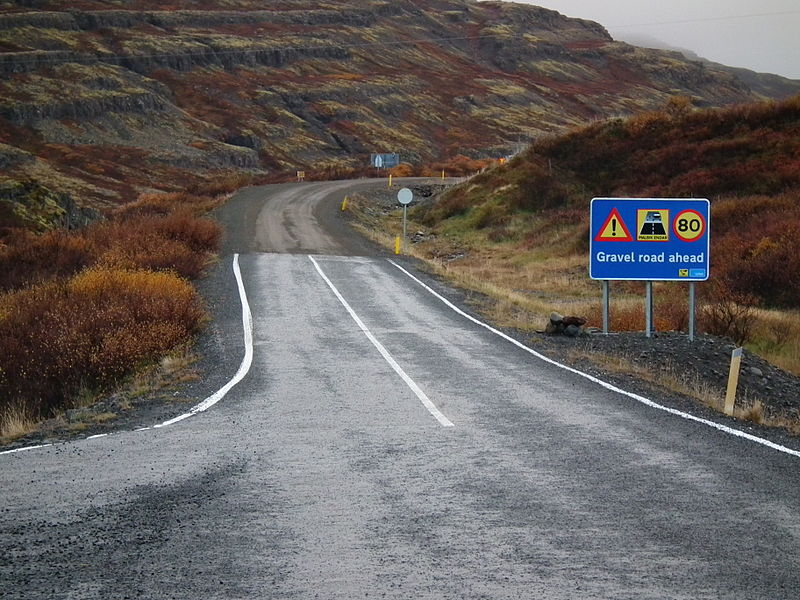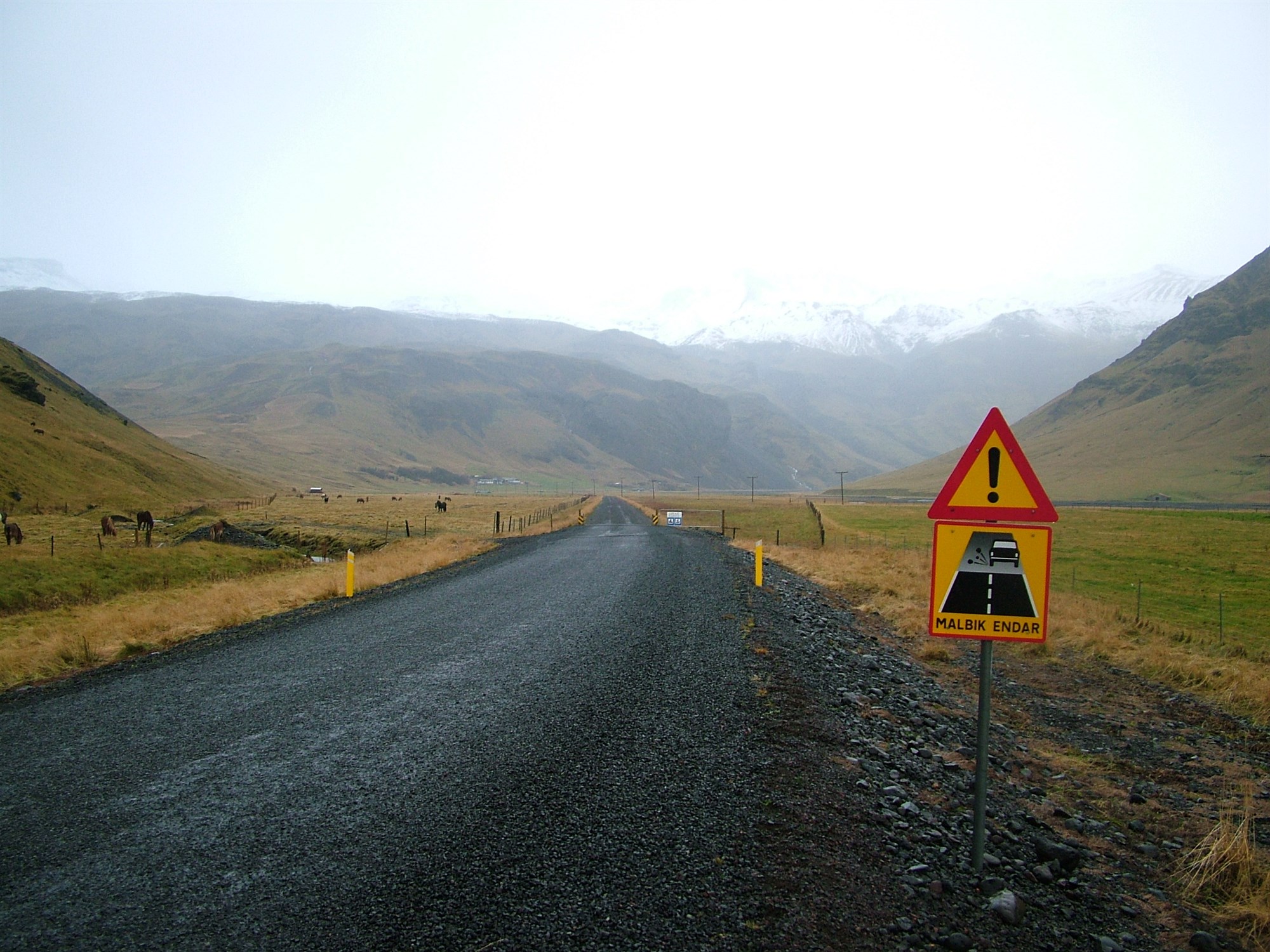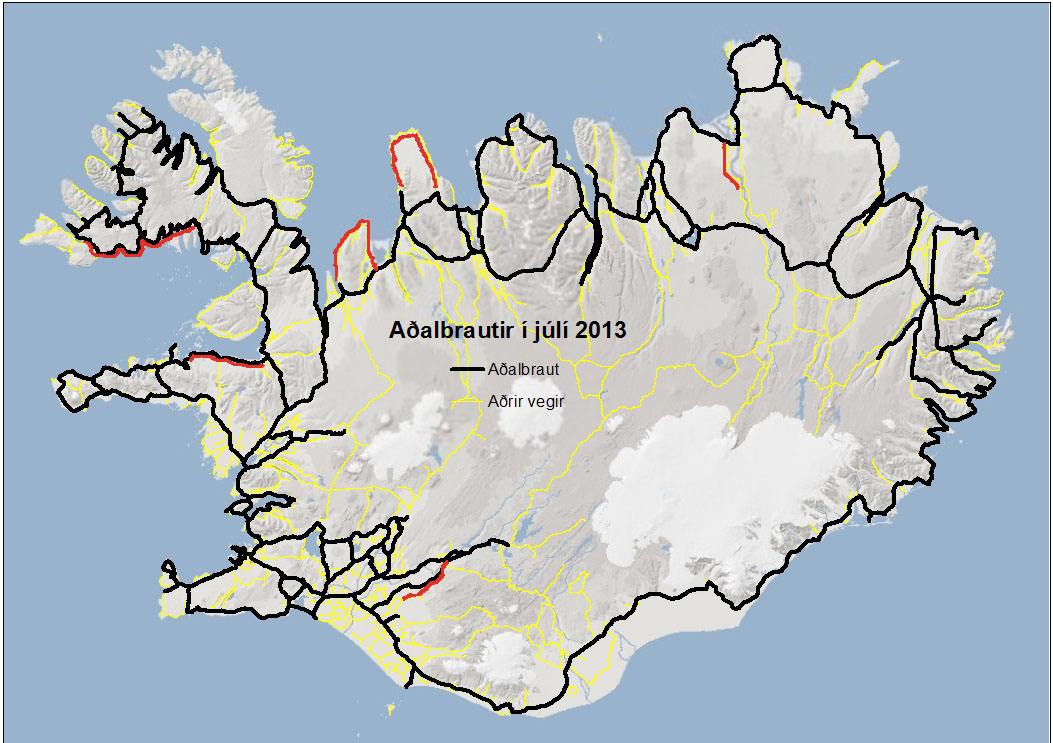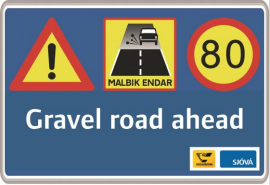There are almost as many gravel roads in Iceland as there are paved and asphalt roads, so it is important to know what to expect and how to handle the bumpy road. Gravel roads in Iceland can vary from short stretches leading to car parks to long stretches up in highland roads, which you will definitely come across on your journey.
Where are the gravel roads in Iceland
The so called Ring Road (number 1), which is 1.332 kilometers, still has approx. 20% kilometers of gravel roads. That is not counting all the F-roads in the highlands and the secondary country roads. To give you an example on the gravel roads in Iceland, check out the video below by Marissyt.
Many of the gravel roads are good and solid, but unfortunately, some of them are not in as good of shape. Many of them have uneven paths, with a number of larger rocks and potholes which can be hazardous. Using our expertise and talking to our SAD travellers, we have mapped out the worst gravel roads in Iceland. The black roads on the map are main roads and yellow roads are secondary roads (please note that main roads can be gravel roads). We have labelled the worst roads in red, as well as the number of each road in the list below. We advise you to take caution when driving on these red roads.
Road #711. Vatnsnes.
Road #54. Skógarströnd from Stykkishólmur village to Dalir area.
Southern part of the Western fjords. Road #60 (from Bjarkalundur), road #62 Barðaströnd
Road #862. Ásbyrgi to Dettifoss (from the east).
Road #26. Sultartangi to Galtalækur.
Road #745. Skagaheiði.
This list is not exhaustive, so if you know of a washboard gravel road we forgot please get in touch and let us know. Of course, all gravel roads such as F roads and country roads (secondary roads) should be driven on with great care as well.
How to drive on gravel roads
Drivers should always be aware and vigilant when behind the wheel, but even more so on gravel roads. Many accidents in Iceland occur on gravel roads because people are not used to them, not taking the necessary precaution when driving on the uneven surface. Many drivers underestimate the circumstances and overestimate their own driving ability, sometimes with bad results.
Here, we have put together a few useful tips for when you're driving on gravel roads. Most accidents on gravel roads happen because: 1) Drivers drive too fast, 2) Narrow roads and Blindrises.
1) The end of the tarred road sign above tells you that the end of the tarred road is near. The maximum speed limit on gravel roads is 80 km per hour. Most accidents on gravel roads happen when drivers are switching from asphalt to gravel. This is because there is a greater risk of losing control of the car, so reduce your speed when you see the above sign. The surface of gravel roads is loose, especially on the sides, so it is best to slow down when you approach a car ahead. You are also at more risk of getting a flat tire if driving too fast on gravel roads and hitting a rock, so it is best to drive slowly.
2) The gravel roads are usually more narrow than other roads. Sometimes, you need to think about oncoming traffic and find places to pass them. Again, driving slow is key here as it will make the process smoother as well as help prevent accidents caused by rocks thrown in every and all directions.
3) There are a lot of blind rises in Iceland and a lot of them are on gravel roads. Just make sure you keep to the right when crossing them and, again, slow down. You never know what might be around the bend, animals for instance.
The Road Traffic directorate has made a good video on how to drive in Iceland with useful tips for driving in on gravel roads. You can view it below in English but it is also available in German, Spanish and French.
What does all this mean for SADcars drivers?
You can usually drive your rental on all gravel roads except the ones marked F. These are highland roads and should only be driven on 4x4 vehicles. Also, note that these roads are only open over the high summer.
Please be aware that off-road driving is strictly forbidden by law in Iceland as it damages nature for decades. If the road does not have a number, do not drive on it, even if there are tire tracks. Those who drive off-road will be heavily fined by police.
SADcars offers Gravel protection insurance. This covers the Lessee for damages caused by gravel on the windshield, headlights and body of the car. When you pick up the car, we will walk with you around the car to mark the rental agreement with all dents and scratches that are already on the car. The gravel protection does not cover you for unsafe driving on gravel roads so please drive safe.
Useful information about driving on gravel roads in Iceland
As always we welcome all tips you might have regarding driving on gravel roads in Iceland. If you have an experience you would like to share with us, feel free to do so at info@sadcars.com.
Be well and drive safe friends!



 2)
2) 

